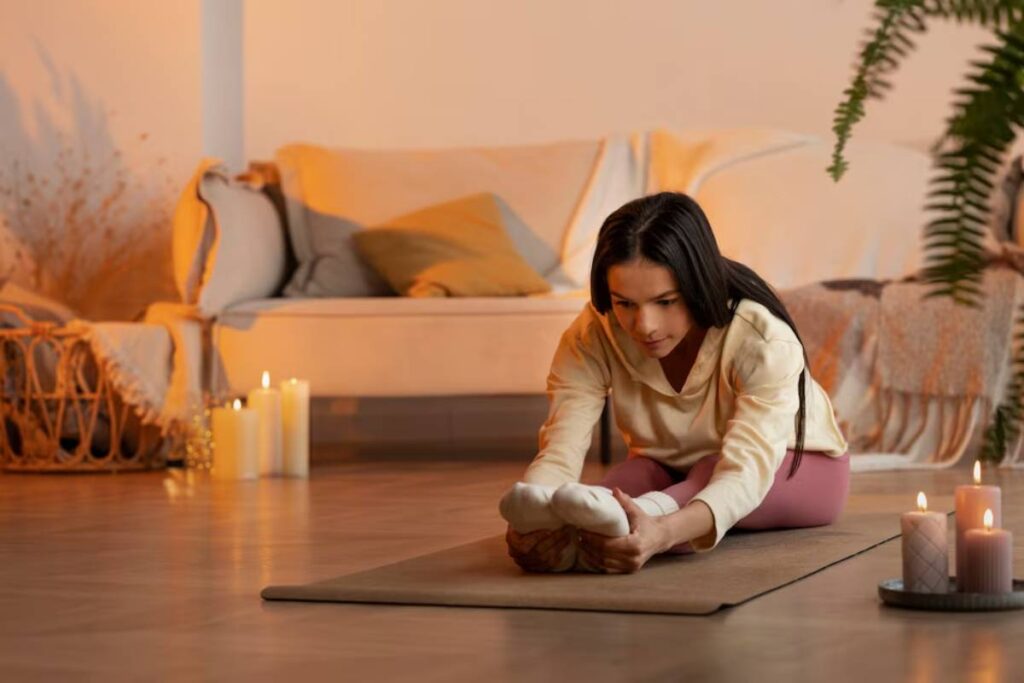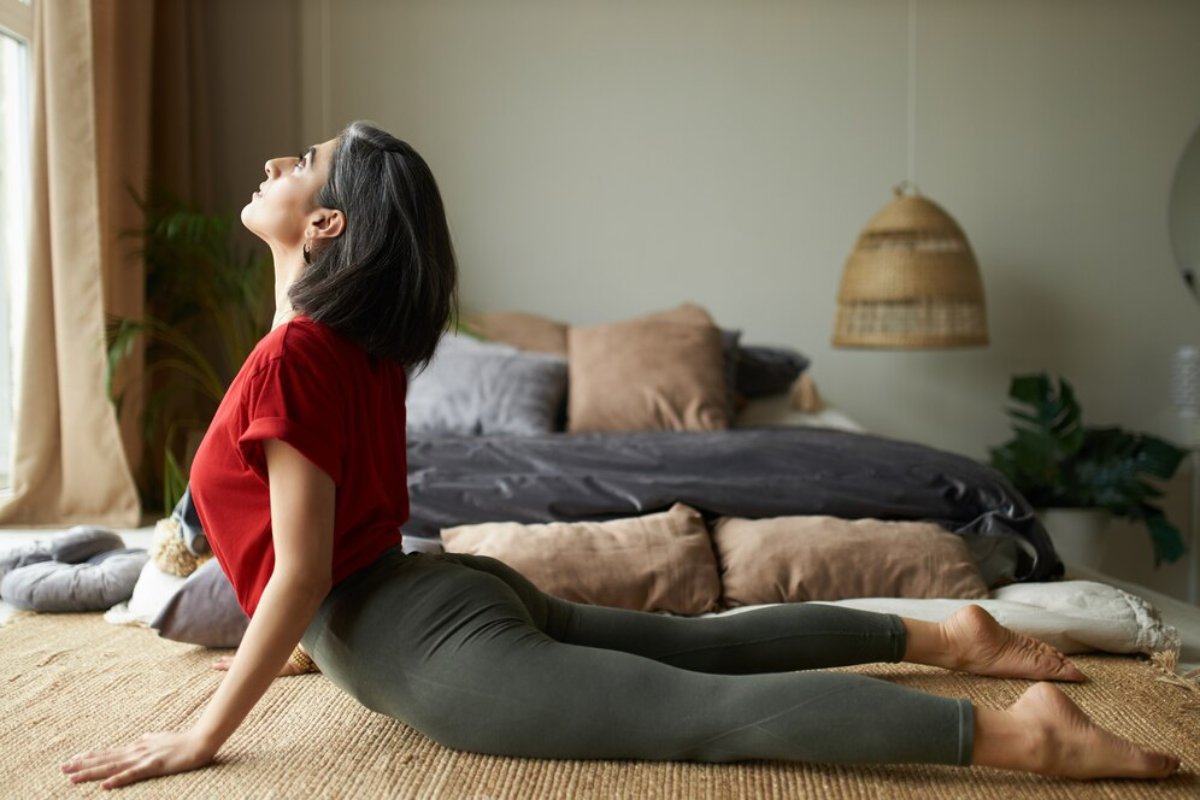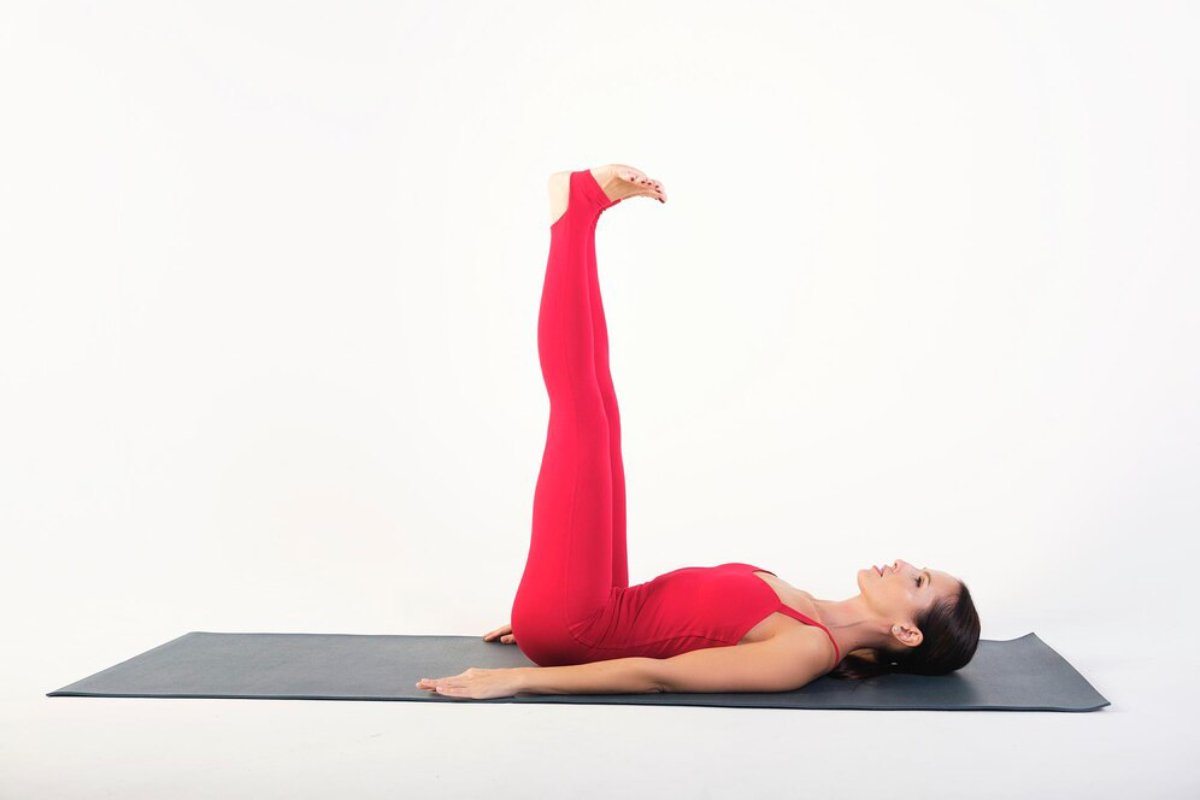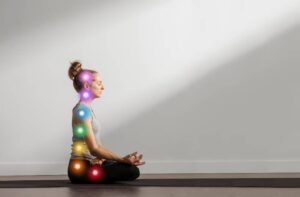The Yoga Blogs

Evening Yoga Routines for Better Sleep
Have you ever been in bed, exhausted, but not able to fall asleep? You’re not alone. Falling asleep is hard in the fast-paced world in which we live. Evening yoga can help.
Evening yoga is not about being flexible or burning calories. It’s laying the groundwork for your mind and body. If you’re a go-getter, troubled student or advocate of beauty rest, a short nightly yoga practice can be transformative.
In this post, we’ll go into the science behind evening yoga, share practical routines, and explain how it can improve your sleep. If you’re tired of tossing and turning, keep reading—you may find the key to better rest.
Why Sleep Suffers in Modern Life
The Stress-Sleep Cycle
Stress and sleep have a complex relationship. When stressed, your body produces cortisol, a hormone that keeps you alert. While this helps during the day, it’s not ideal at night.
Overthinking work tasks? Scrolling endlessly on your phone? Watching just one more episode?
These habits stimulate your nervous system and delay relaxation. Chronic stress can lead to insomnia and poor sleep.
Technology and Sleep Disruption
Blue light from screens disrupts melatonin production, the hormone that it’s time to sleep. Add the mental stimulation from social media or emails, and you feel wired instead of tired.
How Evening Yoga Supports Better Sleep

The Science Behind Yoga and Sleep
Research shows a strong link between yoga and improved sleep. A 2019 study in the Journal of Clinical Sleep Medicine found that those who practised yoga before bed had better sleep duration and quality.
Yoga activates the parasympathetic nervous system, promoting rest. It lowers heart rate, reduces blood pressure, and calms the mind. This makes yoga a powerful tool for bedtime routines.
Mental Clarity Through Movement
Evening yoga gives your mind a gentle, positive focus. Instead of letting thoughts spiral, yoga encourages mindfulness and awareness. It acts like a moving meditation.
Body Awareness and Relaxation
Certain yoga poses relieve tension in the hips, shoulders, and lower back—common stress spots. Stretching these areas signals to your body that it’s time to rest.
Building an Effective Evening Yoga Routine
Key Principles to Follow
- Keep it gentle: Evening yoga is not a workout. Focus on slow, restorative poses.
- Set the mood: Dim lights, play soft music, and turn off digital devices.
- Breathe deeply: Inhale for four counts, exhale for six. Long exhalations promote relaxation.
- Be consistent: Even 10–15 minutes daily can make a difference.

Best Evening Yoga Poses for Sleep
Try this simple sequence tonight:
- Legs-Up-The-Wall Pose (Viparita Karani)
- Lie on your back and rest your legs up against a wall.
- Keep arms relaxed by your sides.
- Stay here for 5–10 minutes.
- Benefits: Reduces tension in legs, calms the nervous system, aids circulation.
- Seated Forward Bend (Paschimottanasana)
- Sit with legs extended straight and gently fold forward.
- Hold for 1–2 minutes.
- Benefits: Soothes the spine, massages abdominal organs, relieves stress.
- Child’s Pose (Balasana)
- Kneel, sit back on your heels, and fold forward with arms extended.
- Rest your forehead on the mat.
- Stay here for 2–3 minutes.
- Benefits: Releases back and shoulder tension, grounds your energy.
- Supine Twist (Supta Matsyendrasana)
- Lie on your back, draw one knee across your body.
- Extend the opposite arm and look away from the bent leg.
- Hold each side for 1–2 minutes.
- Benefits: Releases spine tension, aids digestion, reduces anxiety.
- Corpse Pose (Savasana)
- Lie flat on your back, arms by your side, palms up.
- Breathe naturally for 5–10 minutes.
- Benefits: Deep relaxation, mental stillness, and prepares you for sleep.
Mindfulness Practices to Pair with Evening Yoga
Guided Meditation
Try a 10-minute body scan meditation after yoga. Apps like Insight Timer or Calm offer free recordings. Focus on each body part, noticing sensations without judgment. It helps you disconnect from the day’s chaos.
Journaling and Gratitude
End your routine by writing down three things you’re grateful for. This shifts your focus from stress to positivity. A calm mind is a sleepy mind.

Aromatherapy
Use essential oils like lavender or chamomile. A few drops in a diffuser or on your pillow can boost relaxation.
Real-Life Story: How Yoga Helped Me Sleep Again
I once thought yoga was just handstands and chanting. But when I started waking up at 2 a.m. with work anxiety, I knew I needed to change.
A friend suggested evening yoga. Sceptical but desperate, I tried it.
The first night, I barely made it through five minutes before my mind wandered. But I kept at it. By the end of the first week, I fell asleep faster. After a month, I felt more grounded and less cluttered.
It wasn’t instant magic, but steady transformation. The key was showing up, not perfection.
Additional Tips for Success
Stick to a Schedule
Go to bed and wake up at the same time each day—even on weekends. Your body thrives on routine.
Limit Stimulants in the Evening
Avoid caffeine, heavy meals, and intense exercise within three hours of bedtime. Opt for herbal tea and lighter fare.
Create a Digital Curfew
Set your phone aside at least 30 minutes before bed. Instead, read a book or listen to calming music.
Rest Starts with Ritual
When you’re living in a high-pressure world like today’s, sleep can seem like a low priority. But it’s for your own good. Evening yoga is not just a physical practice — it is a quiet offering to surrender.
By adopting these soothing rituals, you’re telling your mind and body: “It’s safe to rest now.”
So why not start tonight? Unroll your mat, dim the lights and start on the path to more restful sleep. If you’ve attempted, or are planning to try, evening yoga, share your experience in the comments below. Let’s build a community of better-rested minds, one breath at a time.
Share this article with someone who struggles to sleep. Subscribe for more holistic wellness tips, and comment below with your favourite bedtime yoga pose.









